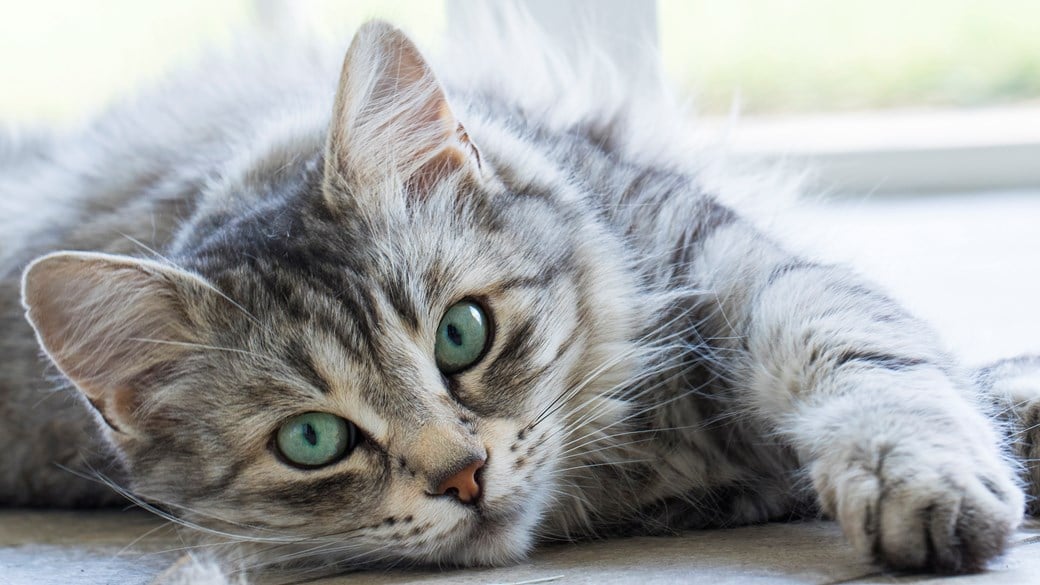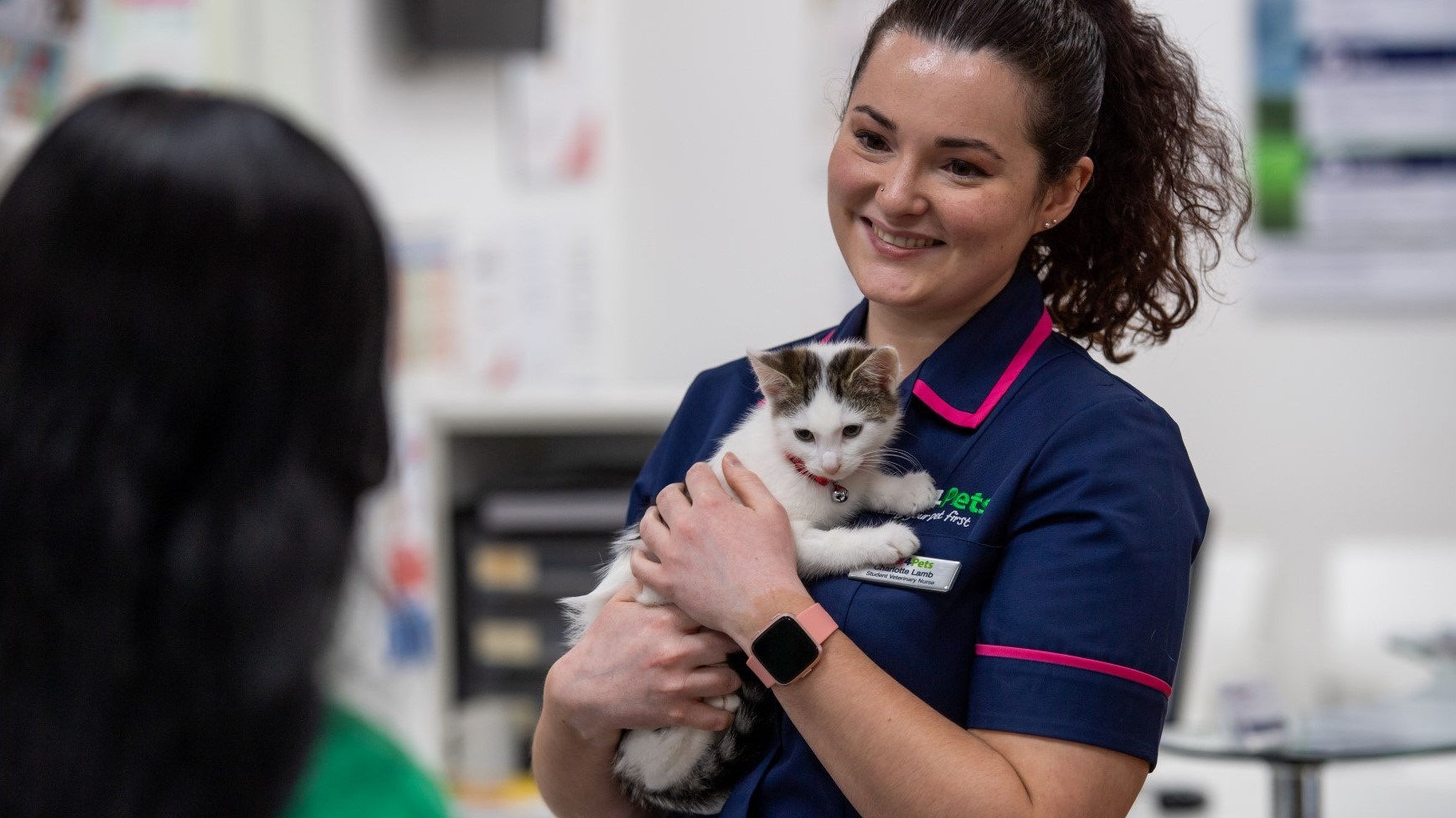
Cat Arthritis Advice & Care
Arthritis in cats can often develop in their middle and senior years. Most commonly arthritis affects the hips, elbows and knees but it can involve any joint.
What is cat arthritis?
Did you know 90% of cats over 12 years old have some form of degenerative joint disease?
Osteoarthritis, often referred to just as arthritis, is a painful disease caused by wear and tear of a joint. It makes movement difficult and sore.
Cats often hide pain, and usually do not limp or cry out with arthritis. This means arthritis in cats is frequently missed. Getting annual check-ups with your vet is the best way to make sure your cat’s joints are monitored, so you can pick up arthritis as soon as it develops.
If your cat has arthritis you can make them more comfortable by employing simple strategies, and planning the best treatment for your cat with your vet.
Read more about cat arthritis
Roughening and loss of the cartilage within a joint leads to arthritis. Healthy cartilage acts to smooth movement, and without it joints become stiff and inflamed.
Daily wear and tear leads to loss of cartilage, which is why arthritis is so common. Most cats, if not all, will develop some amount of arthritis throughout their life.
Cats are more likely to develop severe arthritis if:
- They have suffered injury to a joint
- They are genetic predisposed to joint problems
There is no cure for arthritis. However, you can make your cat more comfortable and slow down the progression of arthritis by using simple strategies, supplements and medications.
The earlier you start supporting your cat and their arthritis, the more successful you are likely to be.
Even with help you may find that your cat still has bad days or periods. These are sometimes associated with cold, damp weather, or excessive exercise. These are likely to increase in severity and frequency as your cat ages.
This means that you will have to manage your cat’s arthritis for the rest of their life.
Often the first indication your cat is suffering from arthritis is that they seem to be slowing down. In cats, this is often seen as sleeping or resting more. Don’t think of this as just a ‘normal’ old age change – just like us, arthritis affects movement because it is painful.
It is important to see your local Vets4Pets vet if you suspect your cat has arthritis.
Specific Signs of cat arthritis:
- A change in behaviour, especially grumpiness or uncharacteristic aggression towards people and/or other animals
- Difficulty or reluctance in jumping up/down or climbing stairs
- Difficulty using the litter tray or cat flap which can result in toileting accidents in the house
- Sleeping and resting more, often in a different (more easily accessible) place
- Overgrown nails
- Spending more time alone
- Grooming less, resulting in a matted, scruffy coat
- Over grooming specific areas (often painful joints)
Your vet may be able to diagnose your cat with arthritis after a full physical examination, and asking you questions about their behaviour at home.
They will bend and stretch your cat’s legs to see how much movement they have, and will watch the way they move.
If your vet needs more information, they may do an x-ray of your cat’s joints to assess them and look for arthritic changes. This helps rule out other problems too.
Book an appointmentLots of different treatments are used for osteoarthritis in cats. This is because each case is different, and because using multiple treatments together often has a better outcome than using a single treatment alone.
Many of these involve changes you can make at home, with support from your Vets4Pets team.
Help at home - There are lots of simple changes you can make at home to help your arthritic cat:
- Ensure soft, comfy beds are easily accessible in a quiet, safe locations
- Use open topped, low-edged litter trays, and put them where they are easily accessible. Having more than one may encourage an arthritic cat to use them
- Put in a litter tray if you haven’t used one before, as cat flaps can be difficult for arthritic cats
- Move bowls to floor level or introduce steps to allow easier access
- Allow easier access to preferred areas such as windowsills and sofas by using ramps or other items as ‘steps’
Exercise: While it can be difficult to exercise your cat, encouraging low-impact movement by engaging with them can be helpful. If they will let you, passive exercises where you gently bend and stretch the affected leg can help.
Weight Control: All cats with arthritis benefit from being a healthy weight. Vets4Pets clinics will be able to support you with dieting your cat, with weigh-ins and advice on food and exercise appropriate for your cat.
Some cats with arthritis do not need any medication or supplements at all, and are simply managed with changes to diet, exercise and home routine.
In more painful cases, cats may need extra help to be comfortable. These may be needed as soon as your cat is diagnosed with arthritis, or can be added in at a later stage as your cat’s arthritis worsens.
Anti-inflammatory Drugs. Anti-inflammatory drugs combat inflammation in the joints, relieving pain. These can be given long-term or in bursts as needed, but should never be given at a higher dose than recommended by your vet. Several different types of anti-inflammatory drugs are available, and your vet will recommend which is best for your cat. Some medications are liquid and others are tablets, so this may impact the most suitable choice for you and your cat. We advise monitoring of kidney function when cats are on these drugs long-term.
Supplements. Supplements are available for arthritis in cats. These contain various ingredients, most commonly a source of glucosamine and chondroitin. While clinical evidence for supplements is mixed, they are very safe and anecdotally can be helpful in arthritis cases. Supplements claim to work by supporting joint health, and therefore have to be taken long-term.
Lifestyle changes and medication are the most common treatments for arthritis, however there are other treatments available to consider that might be suitable for your cat.
Acupuncture. Often best in combination with conventional treatment, acupuncture is thought to stimulate the body’s repair mechanisms. Acupuncture can only be done by an appropriately qualified veterinary professional.
PRP. PRP therapy involves using your cat’s own platelets to stimulate natural healing.
Health Plans to keep your cat healthy
At Vets4Pets we offer a range of Health Plans that make essential routine treatments more affordable. You'll save money on things like annual vaccinations, flea and worm treatment and routine health check-ups.

Cat Advice
Read more of our expert cat advice to keep your cat happy and healthy.
